Using Liquid Personalization to Create More Effective Messaging Campaigns
Published on August 10, 2021/Last edited on August 10, 2021/7 min read
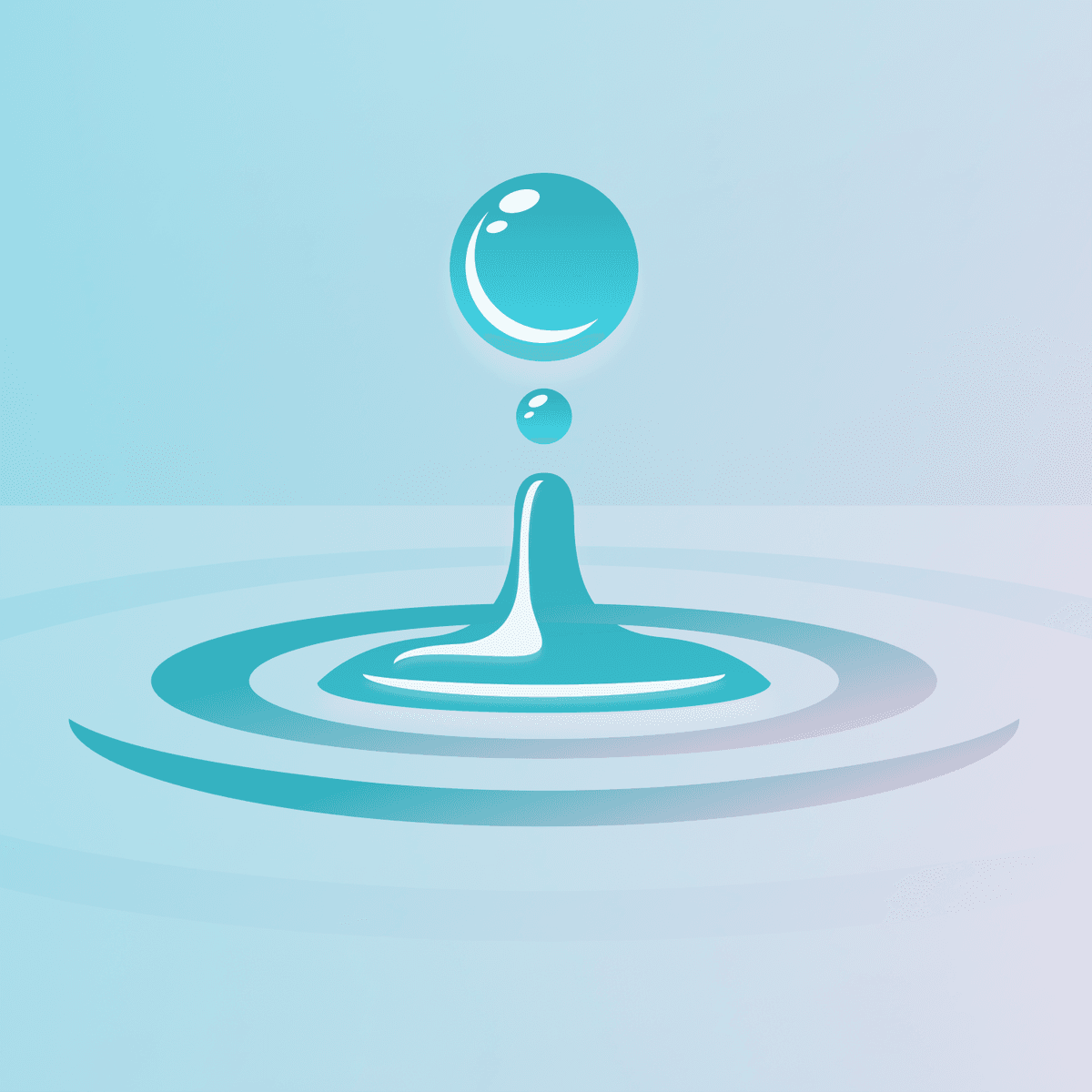

Brendan O'Connor
Customer Insights Analyst, BrazeToday’s consumers increasingly expect personalized experiences from the brands they patronize. That means that the difference between an underwhelming campaign and a powerful, highly impactful one can be as simple as finding the right way to tailor it to each individual recipient. But there’s more to mastering personalization than just knowing that you need to figure out a way to do it.
To help out, we’ll be exploring how you can effectively apply the different types of Liquid—“an open-source, customer-facing template language created by Shopify and written in Ruby”—across an array of different customer messaging channels. But before we do, let’s take a look at current Liquid usage trends among Braze customers:
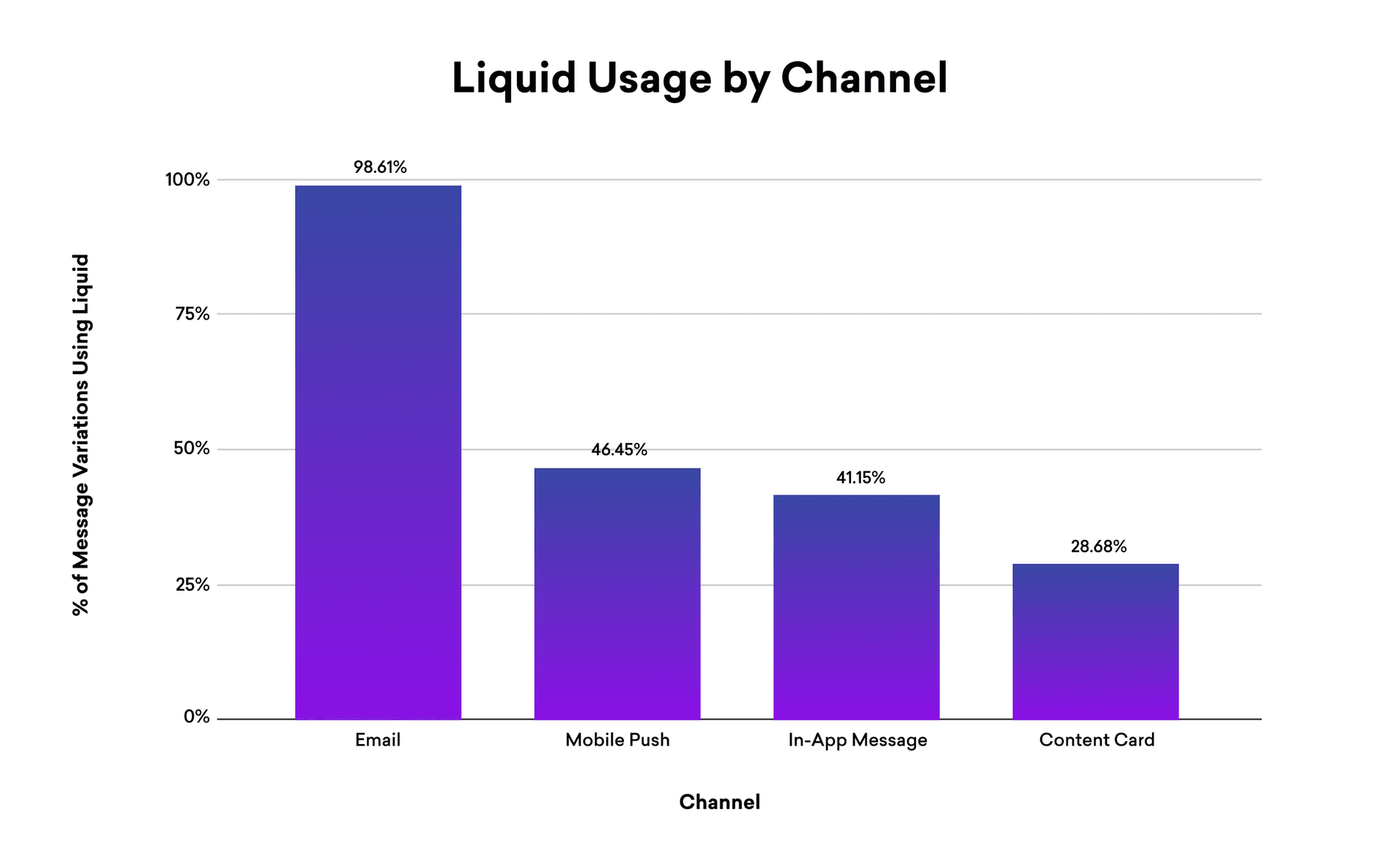
As you can see, when it comes to email, using Liquid to personalize messages is now more common than not. And while no other channels see the majority of their messages being personalized via Liquid, both mobile push notifications and in-app messages are approaching that mark, highlighting the popularity of this customIzation tool.
That said, Liquid is a multi-faceted tool, and not every Liquid type makes sense in every situation. To help you make the most of Liquid to build stronger customer relationships and reach your business goals, let’s dig into what kinds of Liquid are most effective at driving engagement in each major messaging channel.
1. Email
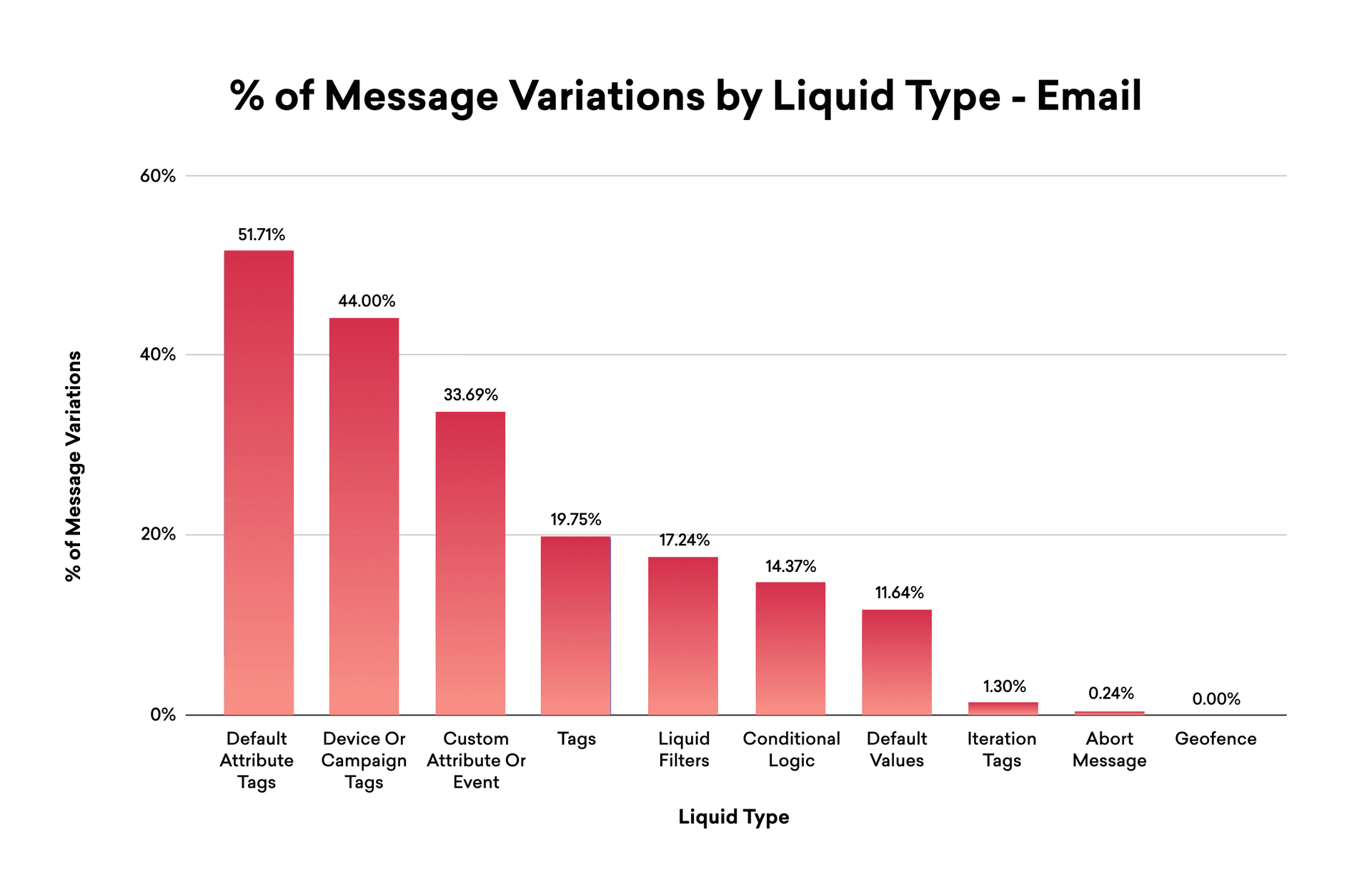
These days, Liquid personalization is a fundamental part of the vast majority of email marketing campaigns. But while that reflects a widespread understanding that this kind of customization supports better outcomes in this key channel, brands need to keep a closer eye on what specific Liquid types perform best in their email campaigns.
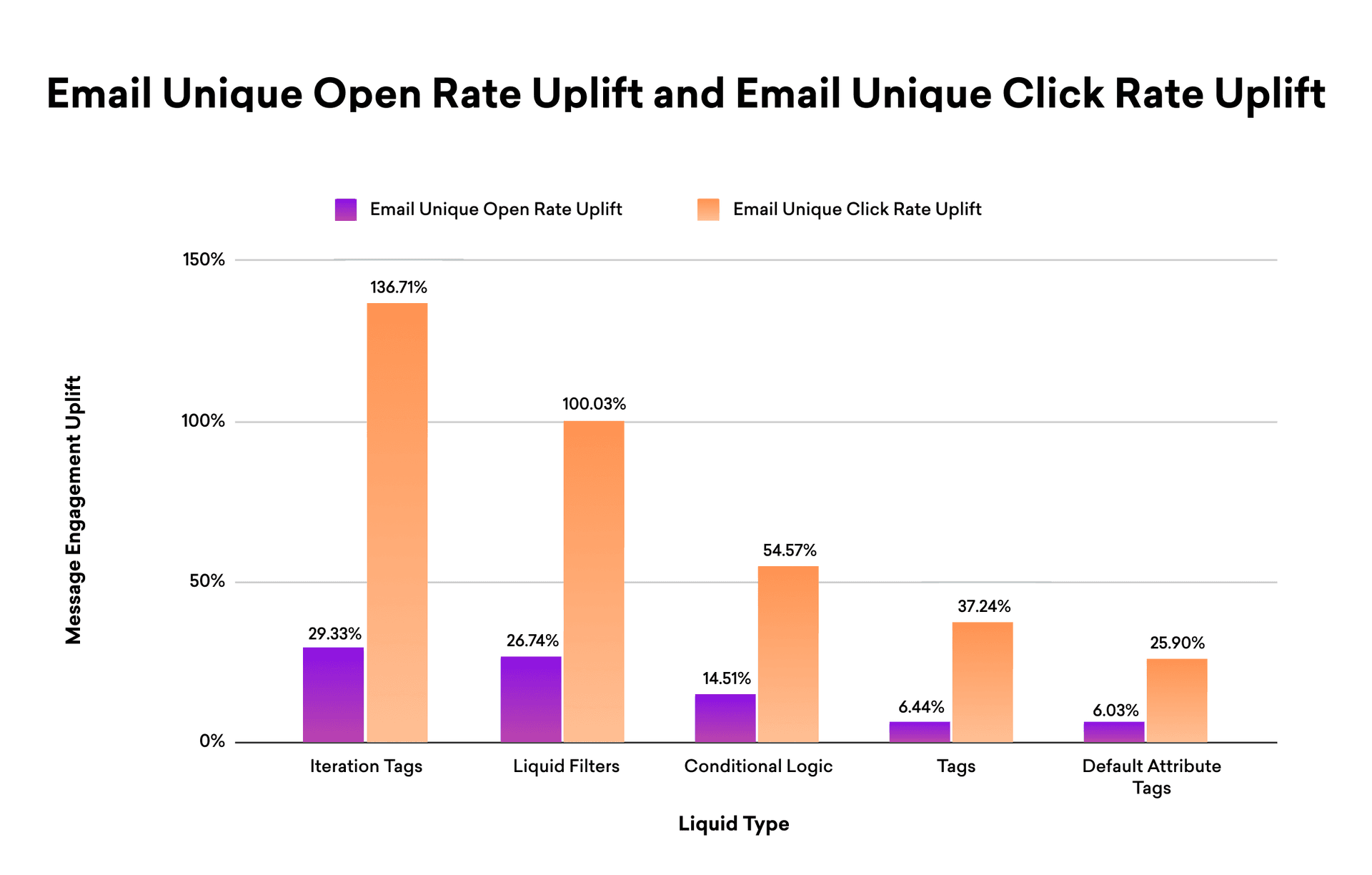
According to our analysis, leveraging Liquid personalization tags, conditional logic, and Liquid filters see the strongest performance when it comes to Liquid types for this channel and should result in a positive uplift for email engagement rates.
Curious what that would look like in practice? You could craft an email that uses a conditional logic statement containing tags to send a specific discount rate if your customers had an item in their cart. You could then use Liquid filters to ensure that the new total price with that discount was formatted with the correct currency. With email, it’s about not just using Liquid to personalize your messaging—it’s just as important to ensure that your users are receiving messages that are relevant to their relationship with your business.
2. Mobile Push Notifications
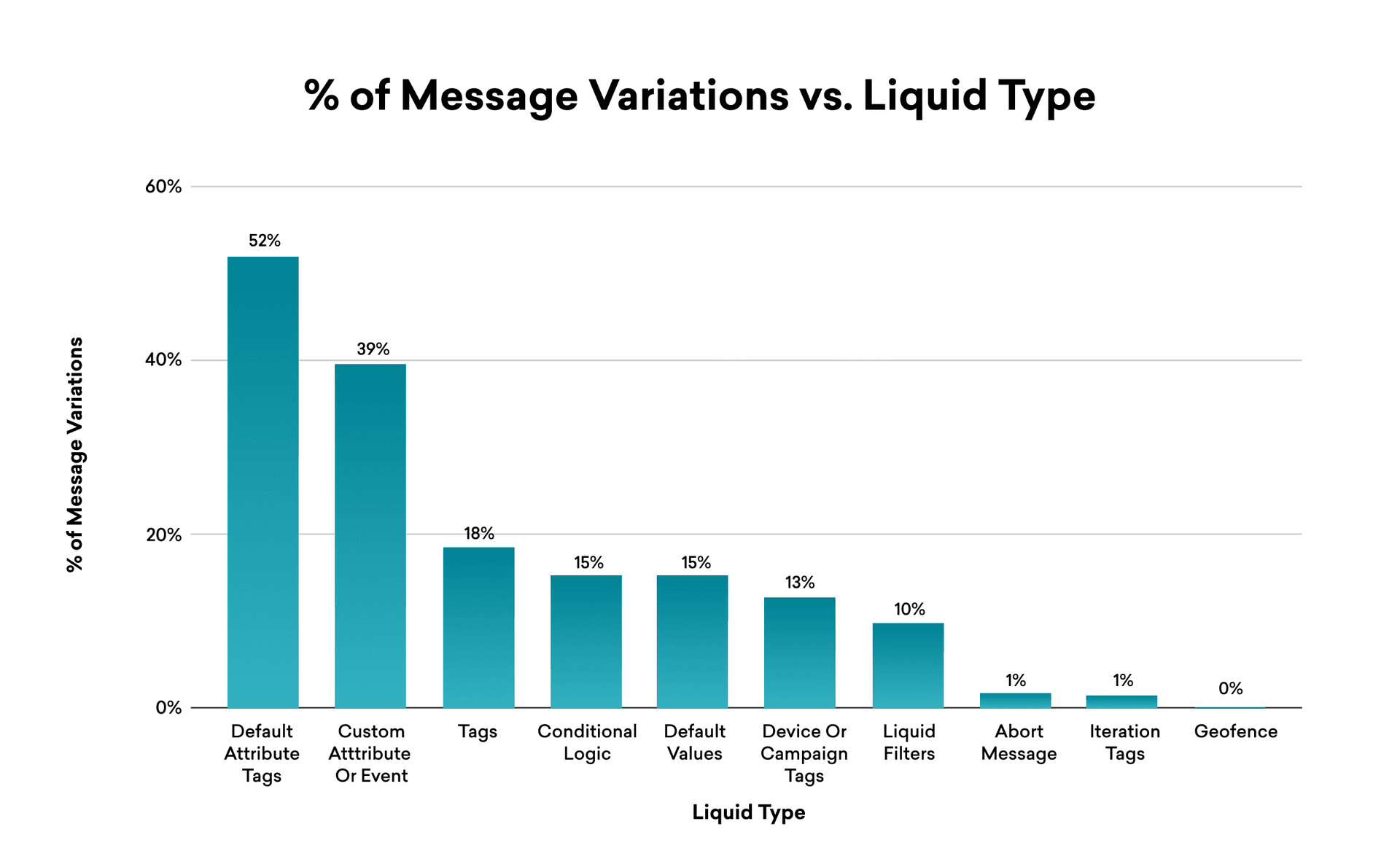
Mobile push is one of the most popular messaging channels out there and our research suggests that there’s a major opportunity to drive engagement uplift for this channel by using Liquid and being thoughtful about how you do it. Currently, only 46% of the message variations sent on the Braze platform used Liquid, so of all the channels mentioned here, this is by far the biggest bang for your buck.
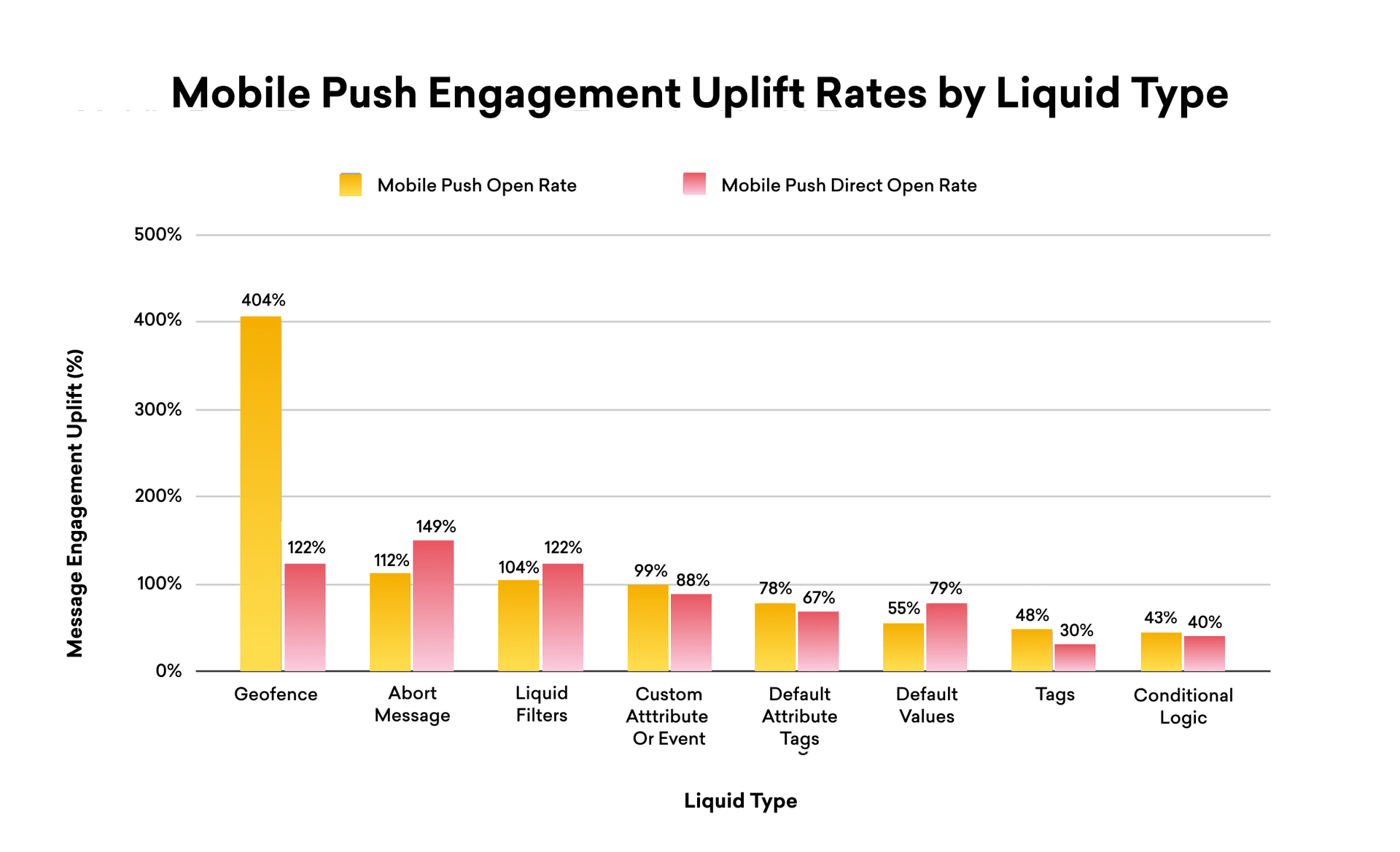
The story when it comes to the impact of Liquid on mobile push opens is pretty straightforward—using it leads to major improvements all across the board. And while some of those improvements are particularly impressive (I’m looking at you, geofences!), the truth is that basically every Liquid type is associated with significant open rate uplift.
That said, let’s look at a few top-performing types. For one thing, as lockdowns become less frequent, we can expect customers to begin moving around more, making Liquid personalization focused around geofence data a powerful way to drive engagement with your push notifications. Another key place to focus? Custom attributes and events are another strong driver of engagement growth when weighting by the usage rate. Leveraging them can be as simple as telling your customer that their order is ready, or showing them that their favorite show has a new episode available. Like it is with email, using Liquid filters represent another way to drive mobile push engagement by ensuring that users receive messaging that is formatted with care.
3. In-App Messages
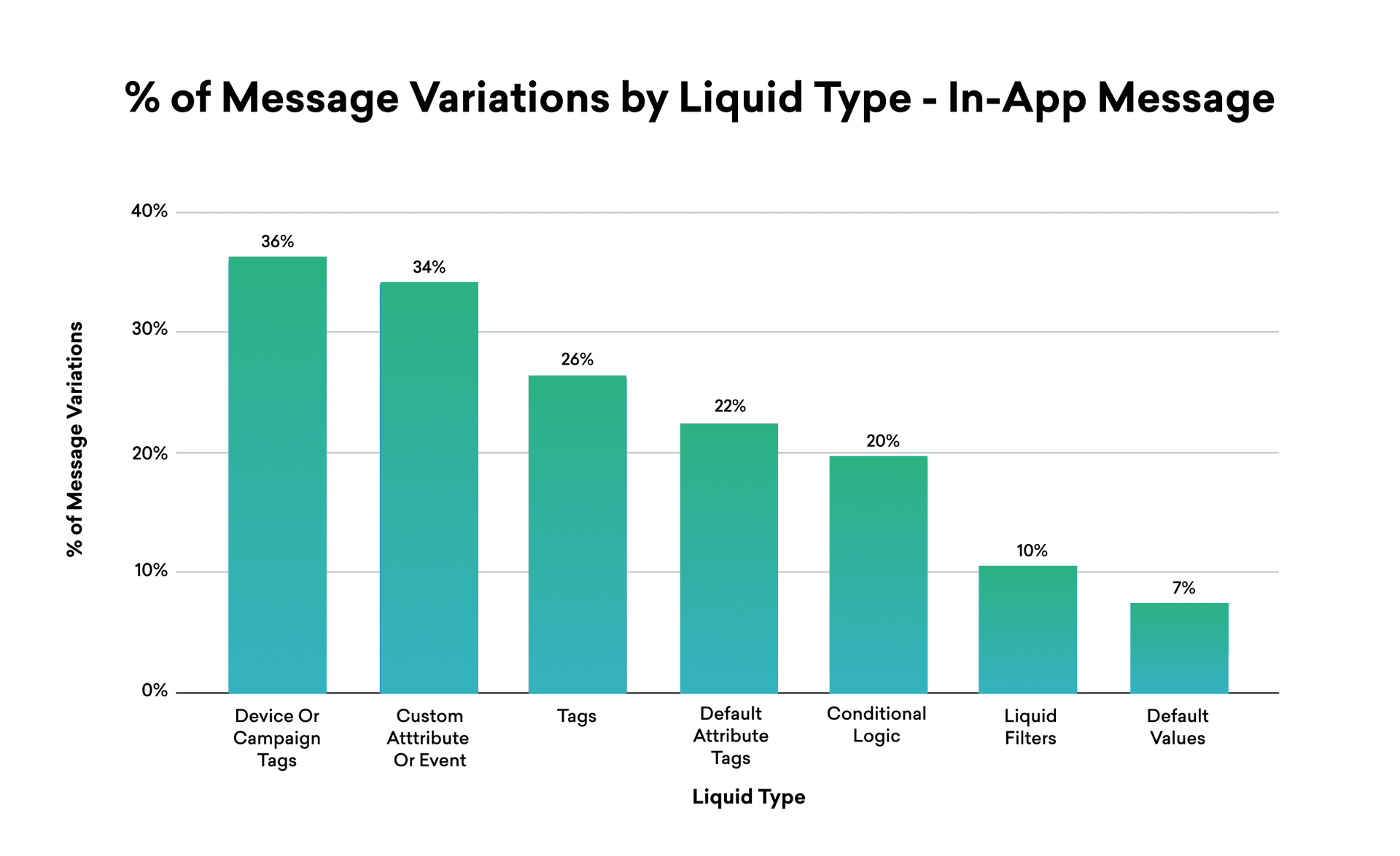
While Liquid usage in connection with in-app messages (IAMs) hasn’t hit the same level of ubiquity we see in email, it’s roughly comparable to mobile push notifications—about 41% of all messages in this channel use some kind of liquid. That means that there’s room for more personalization in this channel; the key, though, is knowing what specific kinds of personalization work best here.
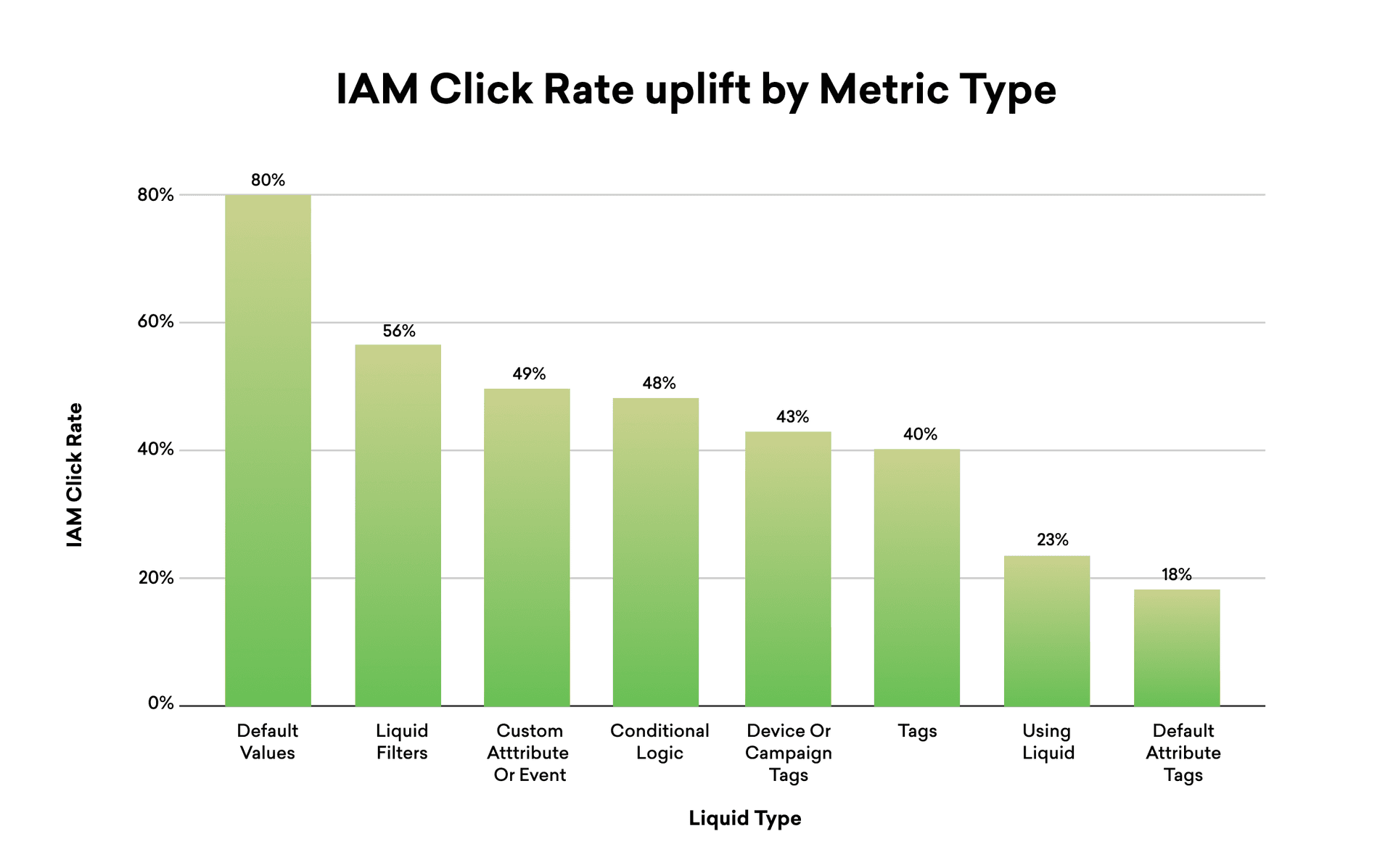
As with other channels, we see that Liquid filters, custom attributes or events, and conditional logic all emerge as strong drivers of engagement uplift. However, given that many in-app messages appear in connection with customer actions, it makes sense that messages personalized based on default values, a subset of Liquid filters, would see the strongest uplift when it comes to clicks.
What does that look like in practice? Say your app is a listings marketplace where customers can ask an agent about the products listed. You could use the default message liquid type to send the following message: “Hey, it looks you’re interested in X, let me know if you have any questions that I can answer!” Using Liquid filters, X could either refer to the product the user has saved, or it can default to the value that’s on the page. This allows you to have the opportunity to send a personalized message where it’s appropriate to do so, but still send a message that makes sense if the user or their actions don’t fit the criteria.
4. Content Cards
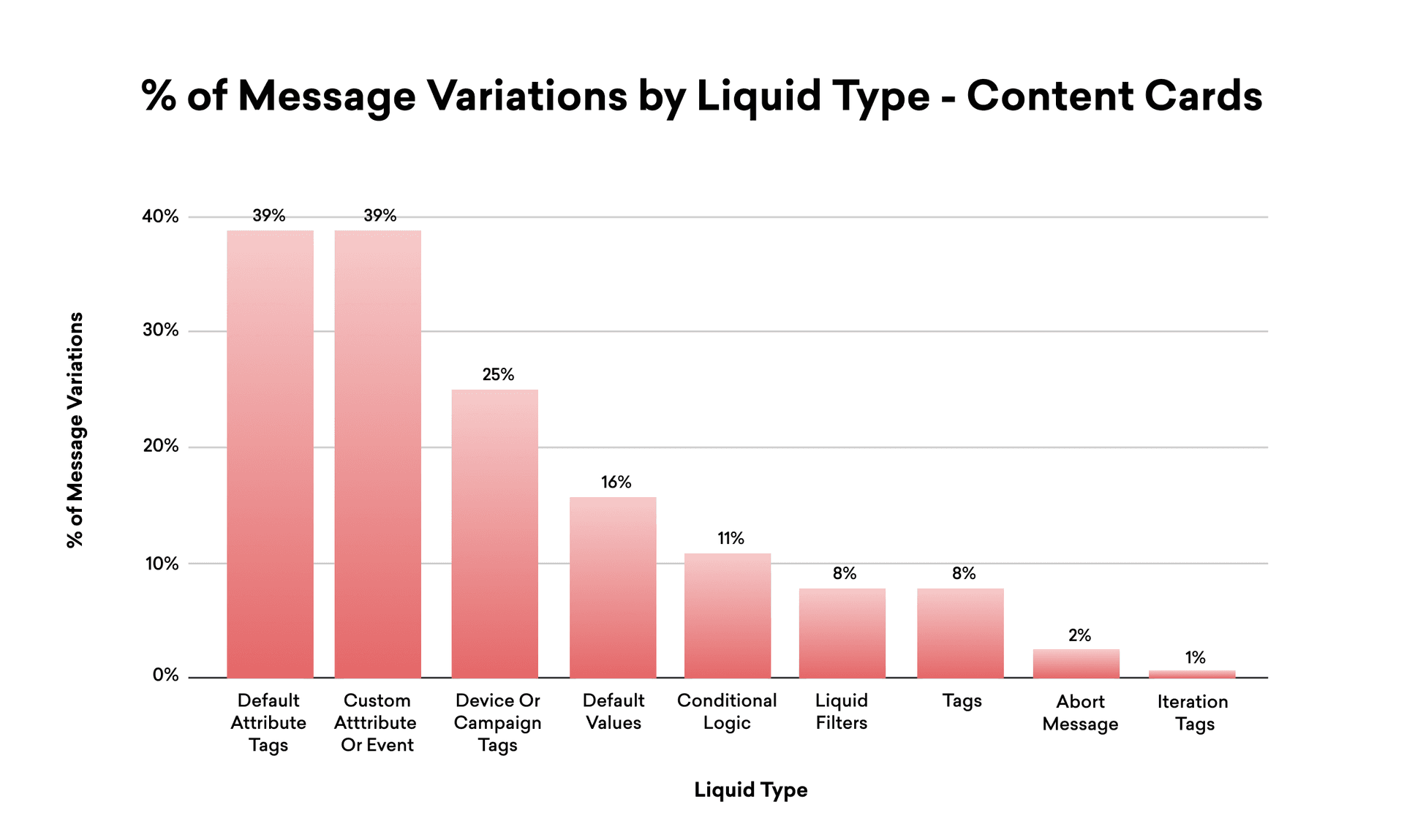
First introduced in 2019, Content Cards are still ramping up in terms of Liquid usage, with only 29% of messages in this channel using any kind of Liquid personalization. This means that there's a huge opportunity to improve relative to your competitors by investing in message customization in this channel, given that many are still figuring out how to apply liquid effectively.
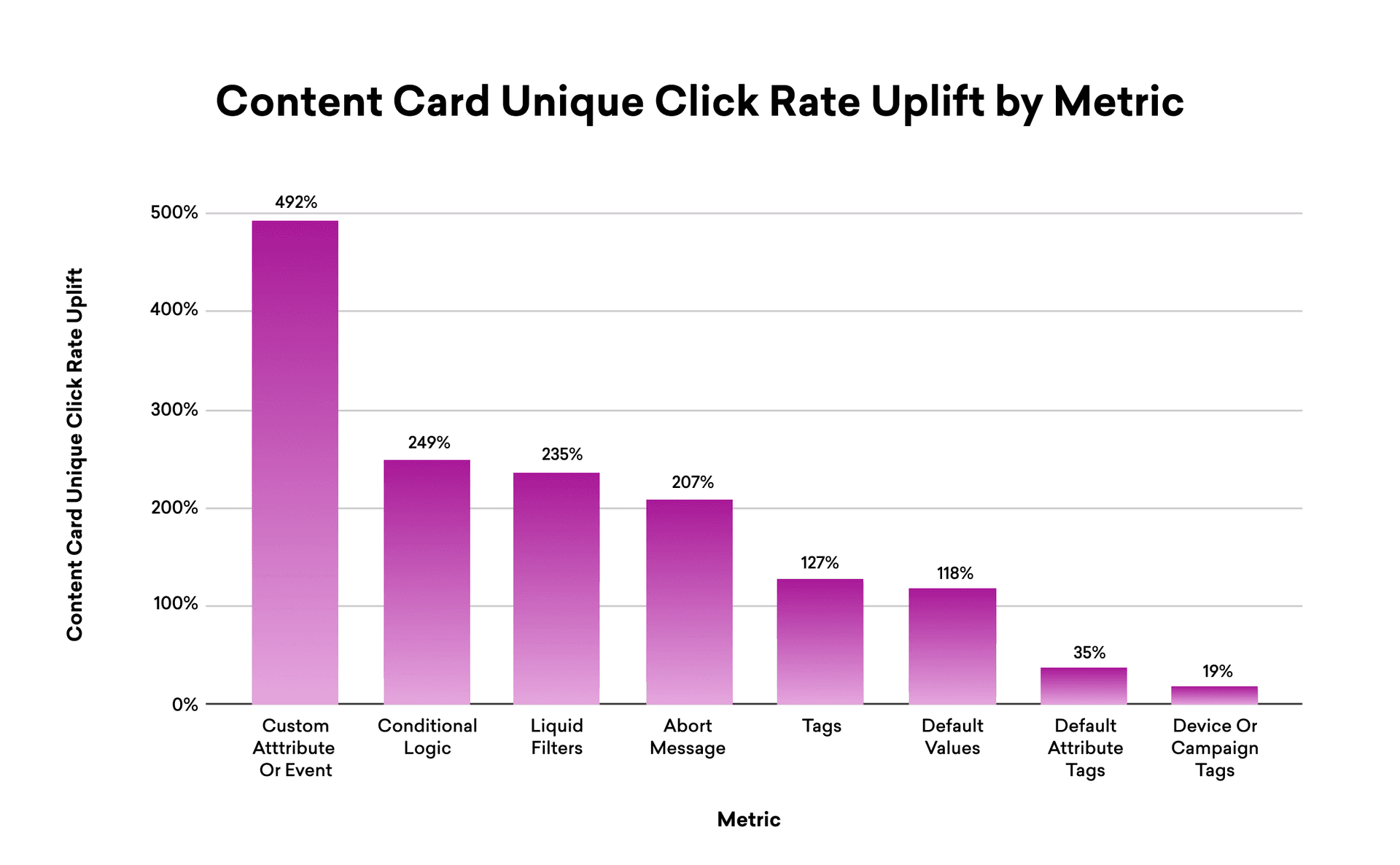
Our analysis found that Content Cards see the strongest uplift in message engagement when Liquid is used in connection with custom attributes or custom event data, seeing a nearly 5X uplift over Content Cards that don’t use this kind of Liquid. (A common use case for this type of Liquid? Creating a Content Card that embeds an offer for a user when they log into the app on their birthday.) Other top-performing Liquid types for Content Cards include conditional logic and liquid filters, reinforcing the theme that you can drive significant gains in engagement when you use logic to send the right message, and filters to ensure that it’s displayed correctly.
5. SMS
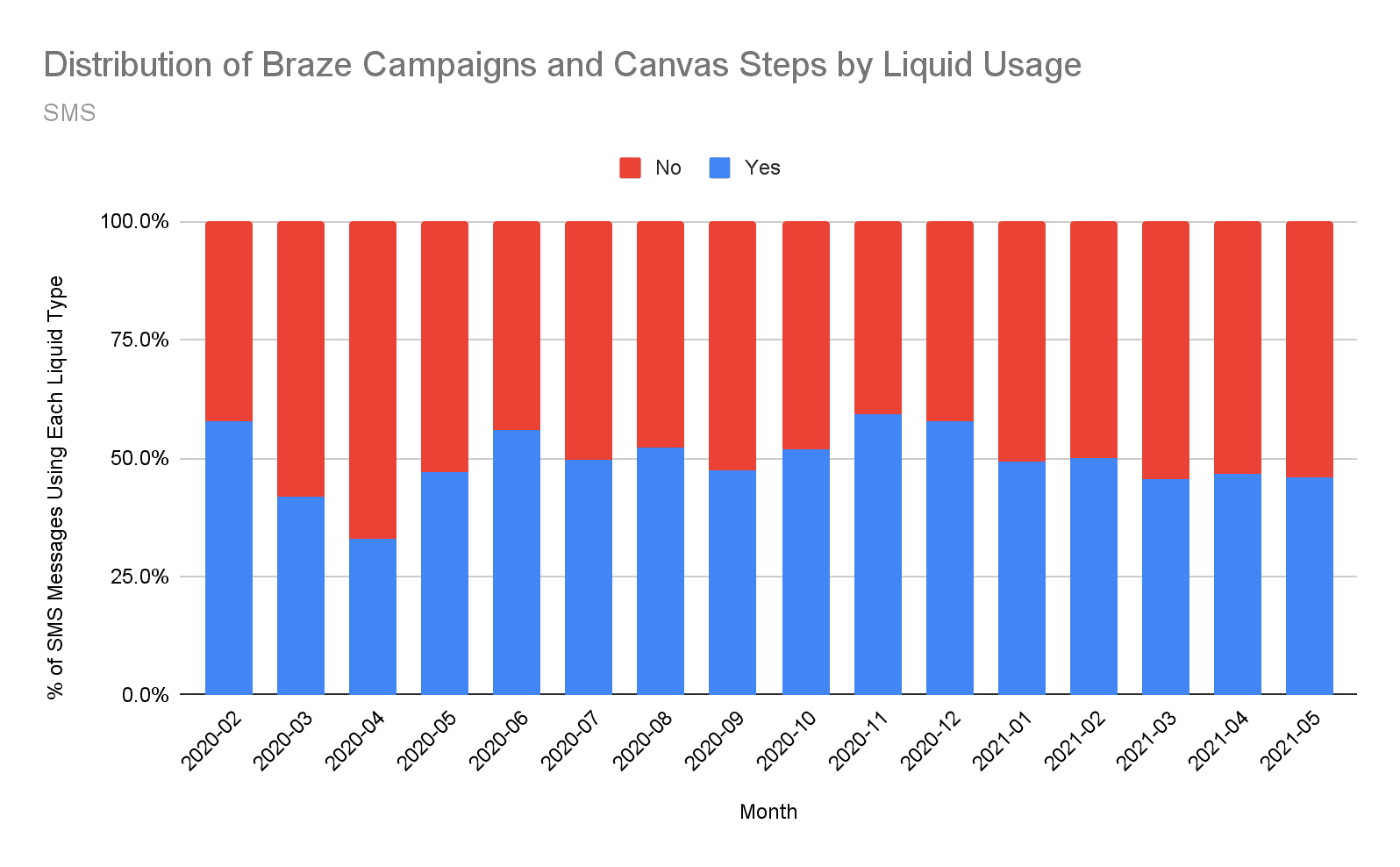
When it comes to Liquid usage, SMS has bobbed up and down over the past year, but generally hovers right around the 50% mark. And while it’s not possible to make an apples-to-apples comparison of SMS engagement rates compared to other channels, our analysis found that campaigns and Canvases employing Liquid for SMS campaigns saw a 76% uplift in conversion rates. Looking for a place to start when leveraging Liquid in your SMS outreach? Start by looking at the Liquid types that performed well when it comes to mobile push, since both channels generally reach users on mobile devices with short, urgent messages.
Final Thoughts
Liquid personalization has proven itself to be a powerful tool for message engagement, providing marketers with the ability to craft responsive, impactful messages for each individual recipient. To make the most of Liquid, think about how you can leverage information that they’re already sharing with you to craft a message that meets them in the appropriate context—and think through what types of Liquid will help to ensure that the message is formatted correctly and capable of speaking to people effectively.
If you’re interested in getting the full context around the different types of Liquid before diving in, check out the Braze Docs, or our LAB Course if you’re a current Braze customer, or read my article giving a high-level overview.
Methodology
All data discussed in this article is drawn from the Braze customer base of more than 1,000 global brands and has been anonymized and aggregated. Liquid usage agnostic of the Liquid type was pulled from the Braze platform over the period of February 2020–May 2021. All data that is displayed at the liquid type level was pulled from the period of February 2020–February 2021, with the exception of SMS, which was pulled from February 2020–May 2021.
Related Tags
Be Absolutely Engaging.™
Sign up for regular updates from Braze.
Related Content
View the Blog
How behavioral marketing turns data into personalized experiences

Team Braze

The new inbox reality: How iOS changes are reshaping email marketing

Aparna Prasad

Experience optimization: Turning data insights into better journeys
